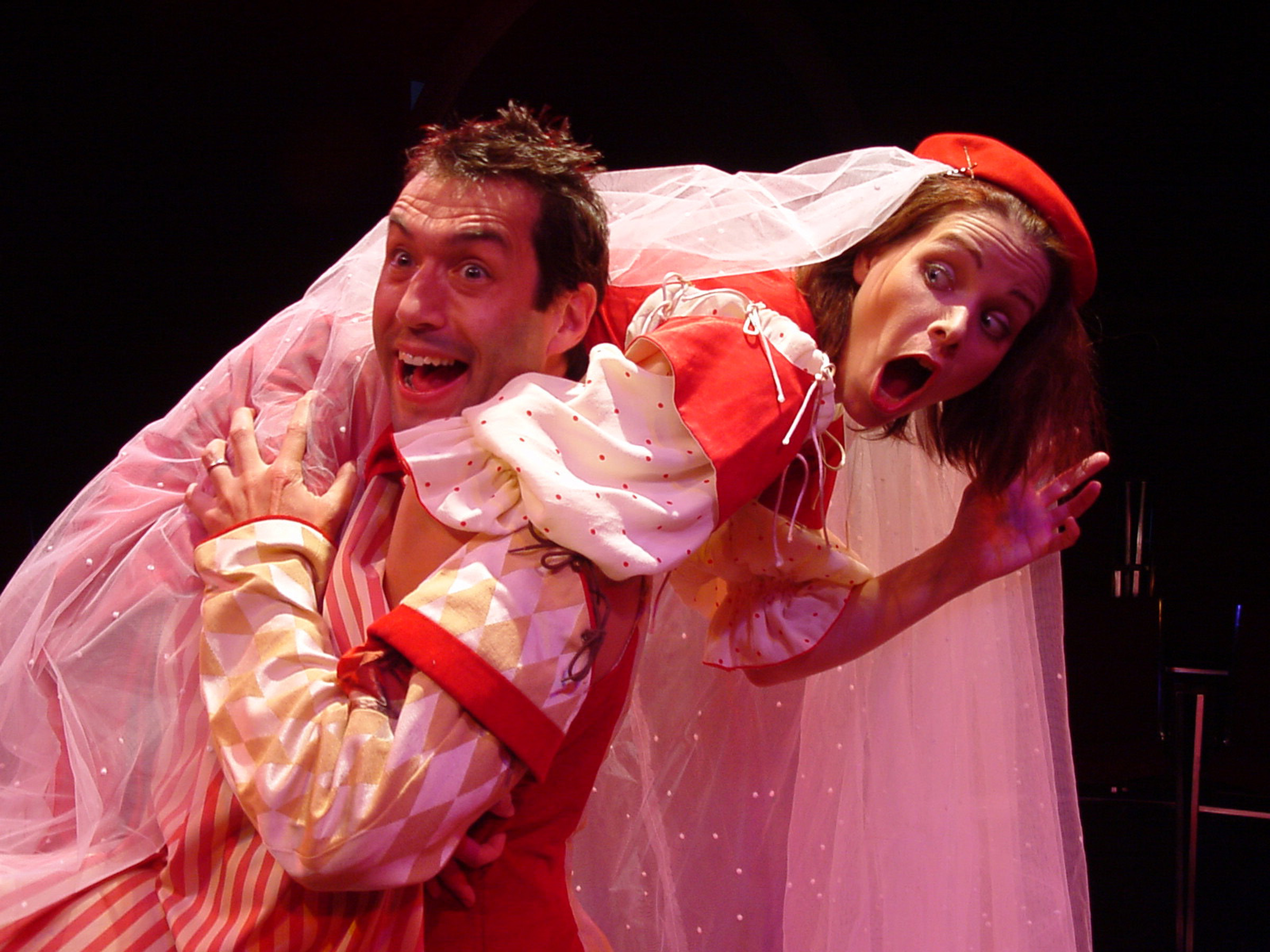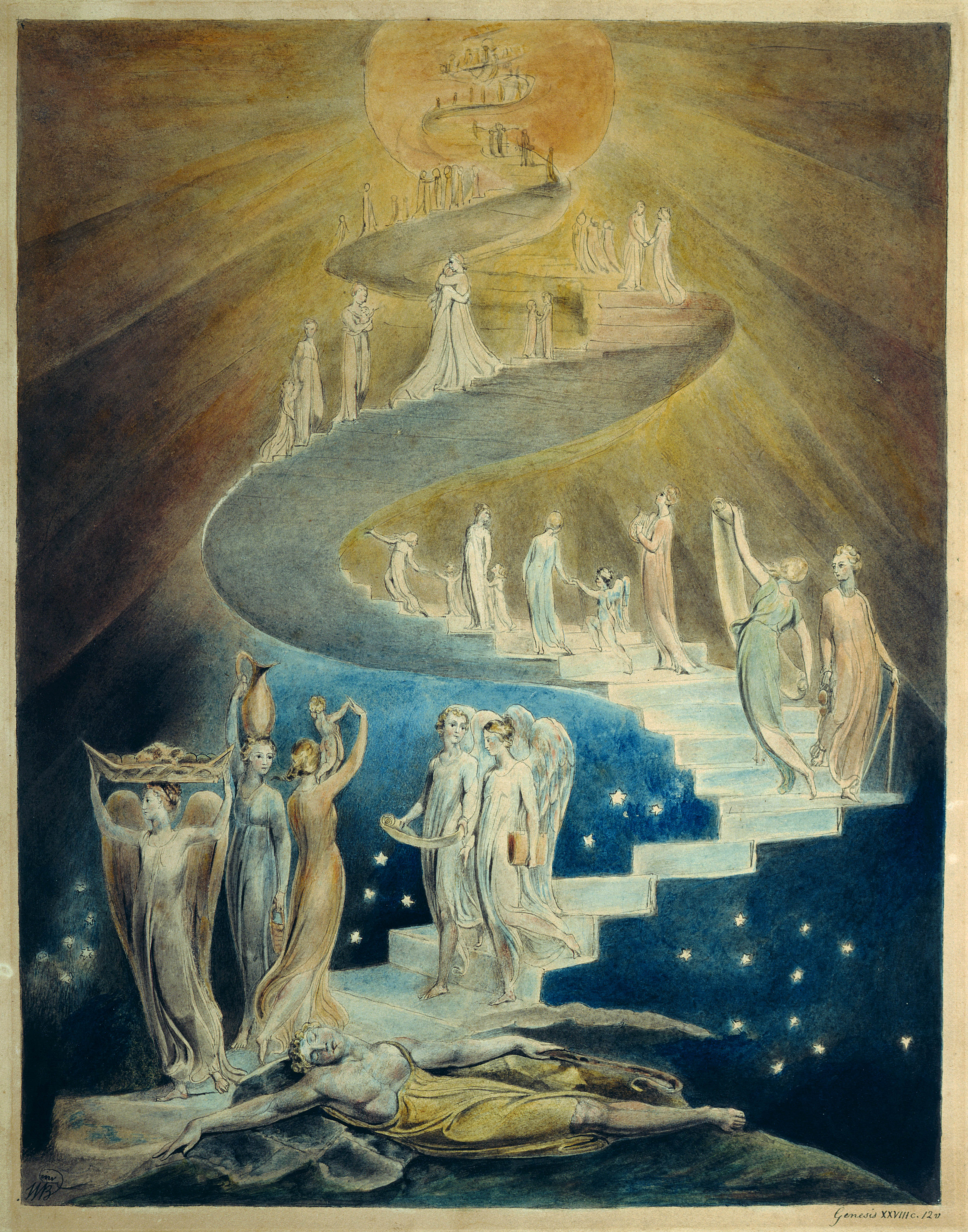|
Induction (play)
An induction in a play is an explanatory scene, summary or other text that stands outside or apart from the main play with the intent to comment on it, moralize about it or in the case of dumb show—to summarize the plot or underscore what is afoot. Typically, an induction precedes the main text of a play. Inductions are a common feature of plays written and performed in the Renaissance period, including those of Shakespeare. While Shakespeare plays do not typically have inductions, they are sometimes depicted as part of the device of the play within the play. Examples include the dumb show in ''Hamlet'' and the address to the audience by Puck in ''A Midsummer Night's Dream''. Another example, in ''The Spanish Tragedy'' by Thomas Kyd, is the introduction to that play by the ghost of Andrea who preps the audience by laying out the story to come. Likewise, Shakespeare's ''The Taming of the Shrew'' opens with induction scenes which involve characters watching the play proper. See al ... [...More Info...] [...Related Items...] OR: [Wikipedia] [Google] [Baidu] |
Play (theatre)
A play is a work of drama, usually consisting mostly of dialogue between characters and intended for theatrical performance rather than just reading. The writer of a play is called a playwright. Plays are performed at a variety of levels, from London's West End and Broadway in New York City – which are the highest level of commercial theatre in the English-speaking world – to regional theatre, to community theatre, as well as university or school productions. A stage play is a play performed and written to be performed on stage rather than broadcast or made into a movie. Stage plays are those performed on any stage before an audience. There are rare dramatists, notably George Bernard Shaw, who have had little preference as to whether their plays were performed or read. The term "play" can refer to both the written texts of playwrights and to their complete theatrical performance. Comedy Comedies are plays which are designed to be humorous. Comedies are often fill ... [...More Info...] [...Related Items...] OR: [Wikipedia] [Google] [Baidu] |
Dumb Show
''Dumb Show'' is a three-character play written by Joe Penhall. First published in 2004, the play centers around the story of an out of control former TV comic named Barry. Performances ''Dumb Show'' first premiered at the Royal Court Theatre in London on September 4, 2004, directed by Terry Johnson. ''Dumb Show'' later made its American debut at the South Coast Repertory in Costa Mesa, California in September 2005. In 2011, ''Dumb Show'' was performed at Keswick's Theatre by the Lake Theatre by the Lake is situated on the shores of Derwentwater in the Lake District in Keswick, Cumbria, England. It opened in 1999, replacing the mobile Century Theatre, and was made possible by an Arts Council Lottery Fund Grant. From May to .... Plot ''Dumb Show'' opens in a scene where the TV personality, Barry, is meeting with John and Jane, private bankers. The bankers offer flattery and vintage champagne to Barry which he finds irresistible. Under the pretence of crafting a p ... [...More Info...] [...Related Items...] OR: [Wikipedia] [Google] [Baidu] |
Renaissance
The Renaissance ( , ) , from , with the same meanings. is a period in European history marking the transition from the Middle Ages to modernity and covering the 15th and 16th centuries, characterized by an effort to revive and surpass ideas and achievements of classical antiquity. It occurred after the Crisis of the Late Middle Ages and was associated with great social change. In addition to the standard periodization, proponents of a "long Renaissance" may put its beginning in the 14th century and its end in the 17th century. The traditional view focuses more on the early modern aspects of the Renaissance and argues that it was a break from the past, but many historians today focus more on its medieval aspects and argue that it was an extension of the Middle Ages. However, the beginnings of the period – the early Renaissance of the 15th century and the Italian Proto-Renaissance from around 1250 or 1300 – overlap considerably with the Late Middle Ages, conventi ... [...More Info...] [...Related Items...] OR: [Wikipedia] [Google] [Baidu] |
William Shakespeare
William Shakespeare ( 26 April 1564 – 23 April 1616) was an English playwright, poet and actor. He is widely regarded as the greatest writer in the English language and the world's pre-eminent dramatist. He is often called England's national poet and the " Bard of Avon" (or simply "the Bard"). His extant works, including collaborations, consist of some 39 plays, 154 sonnets, three long narrative poems, and a few other verses, some of uncertain authorship. His plays have been translated into every major living language and are performed more often than those of any other playwright. He remains arguably the most influential writer in the English language, and his works continue to be studied and reinterpreted. Shakespeare was born and raised in Stratford-upon-Avon, Warwickshire. At the age of 18, he married Anne Hathaway, with whom he had three children: Susanna, and twins Hamnet and Judith. Sometime between 1585 and 1592, he began a successful career in London as an ... [...More Info...] [...Related Items...] OR: [Wikipedia] [Google] [Baidu] |
Hamlet
''The Tragedy of Hamlet, Prince of Denmark'', often shortened to ''Hamlet'' (), is a tragedy written by William Shakespeare sometime between 1599 and 1601. It is Shakespeare's longest play, with 29,551 words. Set in Denmark, the play depicts Prince Hamlet and his attempts to exact revenge against his uncle, Claudius, who has murdered Hamlet's father in order to seize his throne and marry Hamlet's mother. ''Hamlet'' is considered among the "most powerful and influential tragedies in the English language", with a story capable of "seemingly endless retelling and adaptation by others". There are many works that have been pointed to as possible sources for Shakespeare's play—from ancient Greek tragedies to Elizabethan plays. The editors of the Arden Shakespeare question the idea of "source hunting", pointing out that it presupposes that authors always require ideas from other works for their own, and suggests that no author can have an original idea or be an originator. Wh ... [...More Info...] [...Related Items...] OR: [Wikipedia] [Google] [Baidu] |
A Midsummer Night's Dream
''A Midsummer Night's Dream'' is a comedy written by William Shakespeare 1595 or 1596. The play is set in Athens, and consists of several subplots that revolve around the marriage of Theseus and Hippolyta. One subplot involves a conflict among four Athenian lovers. Another follows a group of six amateur actors rehearsing the play which they are to perform before the wedding. Both groups find themselves in a forest inhabited by fairies who manipulate the humans and are engaged in their own domestic intrigue. The play is one of Shakespeare's most popular and is widely performed. Characters * Theseus— Duke of Athens * Hippolyta—Queen of the Amazons * Egeus—father of Hermia * Hermia—daughter of Egeus, in love with Lysander * Lysander—in love with Hermia * Demetrius—suitor to Hermia * Helena—in love with Demetrius * Philostrate— Master of the Revels * Peter Quince—a carpenter * Nick Bottom—a weaver * Francis Flute—a bellows-mender * Tom Snout ... [...More Info...] [...Related Items...] OR: [Wikipedia] [Google] [Baidu] |
The Spanish Tragedy
''The Spanish Tragedy, or Hieronimo is Mad Again'' is an Elizabethan tragedy written by Thomas Kyd between 1582 and 1592. Highly popular and influential in its time, ''The Spanish Tragedy'' established a new genre in English theatre, the revenge play or revenge tragedy. The play contains several violent murders and includes as one of its characters a personification of Revenge. ''The Spanish Tragedy'' is often considered to be the first mature Elizabethan drama, a claim disputed with Christopher Marlowe's '' Tamburlaine'', and was parodied by many Elizabethan and Jacobean playwrights, including Marlowe, William Shakespeare and Ben Jonson. Many elements of ''The Spanish Tragedy,'' such as the play-within-a-play used to trap a murderer and a ghost intent on vengeance, appear in Shakespeare's ''Hamlet.'' (Thomas Kyd is frequently proposed as the author of the hypothetical '' Ur-Hamlet'' that may have been one of Shakespeare's primary sources for ''Hamlet''.) Performance Earl ... [...More Info...] [...Related Items...] OR: [Wikipedia] [Google] [Baidu] |
Thomas Kyd
Thomas Kyd (baptised 6 November 1558; buried 15 August 1594) was an English playwright, the author of '' The Spanish Tragedy'', and one of the most important figures in the development of Elizabethan drama. Although well known in his own time, Kyd fell into obscurity until 1773 when Thomas Hawkins, an early editor of ''The Spanish Tragedy'', discovered that Kyd was named as its author by Thomas Heywood in his ''Apologie for Actors'' (1612). A hundred years later, scholars in Germany and England began to shed light on his life and work, including the controversial finding that he may have been the author of a ''Hamlet'' play pre-dating Shakespeare's, which is now known as the '' Ur-Hamlet''. Early life Thomas Kyd was the son of Francis and Anna Kyd. There are no records of the day he was born, but he was baptised in the church of St Mary Woolnoth in the Ward of Langborn, Lombard Street, London on 6 November 1558. The baptismal register at St Mary Woolnoth carries this entry: ... [...More Info...] [...Related Items...] OR: [Wikipedia] [Google] [Baidu] |
The Taming Of The Shrew
''The Taming of the Shrew'' is a comedy by William Shakespeare, believed to have been written between 1590 and 1592. The play begins with a framing device, often referred to as the induction, in which a mischievous nobleman tricks a drunken tinker named Christopher Sly into believing he is actually a nobleman himself. The nobleman then has the play performed for Sly's diversion. The main plot depicts the courtship of Petruchio and Katherina, the headstrong, obdurate shrew. Initially, Katherina is an unwilling participant in the relationship; however, Petruchio "tames" her with various psychological and physical torments, such as keeping her from eating and drinking, until she becomes a desirable, compliant, and obedient bride. The subplot features a competition between the suitors of Katherina's younger sister, Bianca, who is seen as the "ideal" woman. The question of whether the play is misogynistic has become the subject of considerable controversy, particularly among mode ... [...More Info...] [...Related Items...] OR: [Wikipedia] [Google] [Baidu] |
Story Within A Story
A story within a story, also referred to as an embedded narrative, is a literary device in which a character within a story becomes the narrator of a second story (within the first one). Multiple layers of stories within stories are sometimes called nested stories. A play may have a brief play within it, such as Shakespeare's play ''Hamlet''; a film may show the characters watching a short film; or a novel may contain a short story within the novel. A story within a story can be used in all types of narration: novels, short stories, plays, television programs, films, poems, songs, video games, and philosophical essays. The inner stories are told either simply to add entertainment or more usually to act as an example to the other characters. In either case, the inner story often has a symbolic and psychological significance for the characters in the outer story. There is often some parallel between the two stories, and the fiction of the inner story is used to reveal the tru ... [...More Info...] [...Related Items...] OR: [Wikipedia] [Google] [Baidu] |
.jpg)






